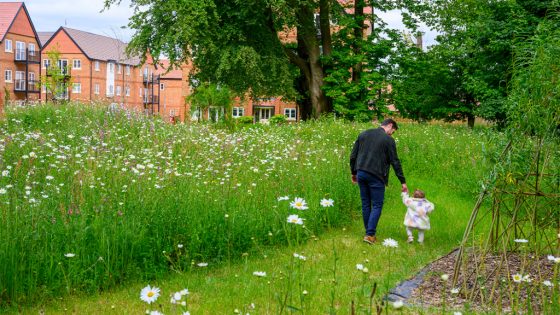A major trade body has warned that new biodiversity net gain (BNG) legislation, which comes into force today (12 February), will deter homebuilding.
Rico Wojtulewicz, head of policy and market insights at the National Federation of Builders (NFB), said some of the organisation’s members had told him that they planned to leave the market, as requirements to offset biodiversity loss add to existing financial pressures.
He said: “Without question, it’s going to put businesses under or make them exit the market. There’s no money to be made.”
Wojtulewicz said the new rules would impact small and medium-sized homebuilders already suffering from material price inflation, nutrient neutrality rules and the watering down of Local Housing Need Assessments in the latest version of the National Planning Policy Framework, published in December.
He said less-established homebuilders and builders in rural areas would be hit the hardest, with fewer opportunities to gain work.
From today, all residential developments with 10 or more dwellings, or with a site area greater than 0.5 hectares, must deliver a 10 per cent increase in biodiversity from the existing baseline.
The requirements will kick in on 2 April for smaller residential developments and commercial developments with a floor space of less than 1,000 square metres or a total area of less than 1 hectare.
Developers may meet the requirements in three ways: enhancing biodiversity on site; improving biodiversity on other sites they own or buying biodiversity credits from other landowners; or buying statutory biodiversity credits from the government that will be used to invest in habitat creation.
Wojtulewicz said that the metric used to define BNG is too limited to allow homebuilders to implement onsite solutions where space is constrained. Measures such as bat boxes, bee bricks and amphibian kerbs currently do not contribute towards a development’s BNG.
The NFB is proposing a two-year trial period wherein 50 per cent of any BNG requirement on developments of up to 50 homes can be fulfilled through onsite solutions targeting local species.
Amanda Williams, head of environmental sustainability at the Chartered Institute of Building (CIOB), said the new legislation does not address the “embodied biodiversity” of building projects – the impact on nature of producing and processing construction materials, including timber, sand and gravel.
She also raised concerns about the skills needed to meet the new requirements: “It will take time for our industry to adapt to the complex new legislation, and understanding will need to be shown by regulators, particularly while there continues to be a shortage of experts such as ecologists to factor biodiversity net gain into project plans, deliver it and monitor success.
“CIOB has long called for a green skills strategy to address this and other skills shortages in areas such as retrofitting, and without recruiting, training and retaining these specialists, biodiversity net gain, along with net zero, will not be achieved.”

